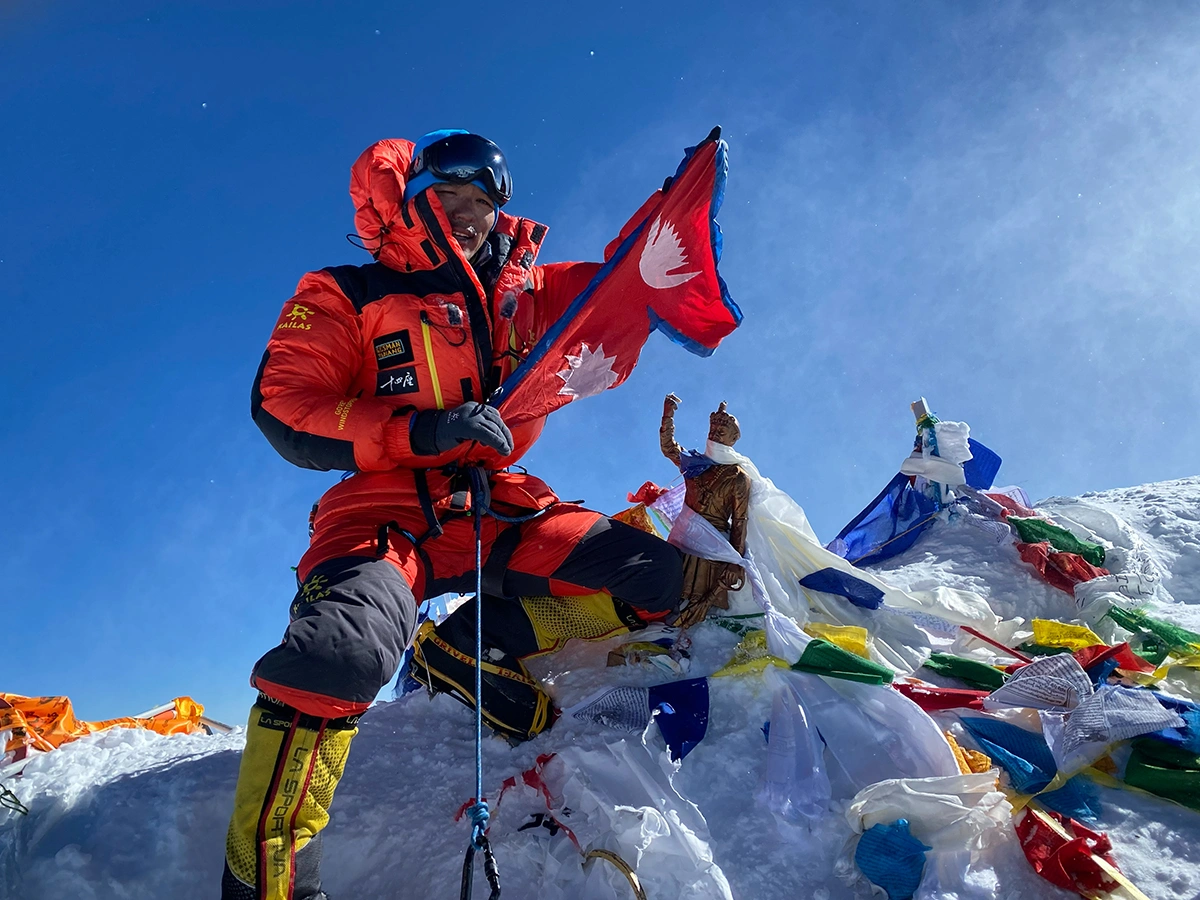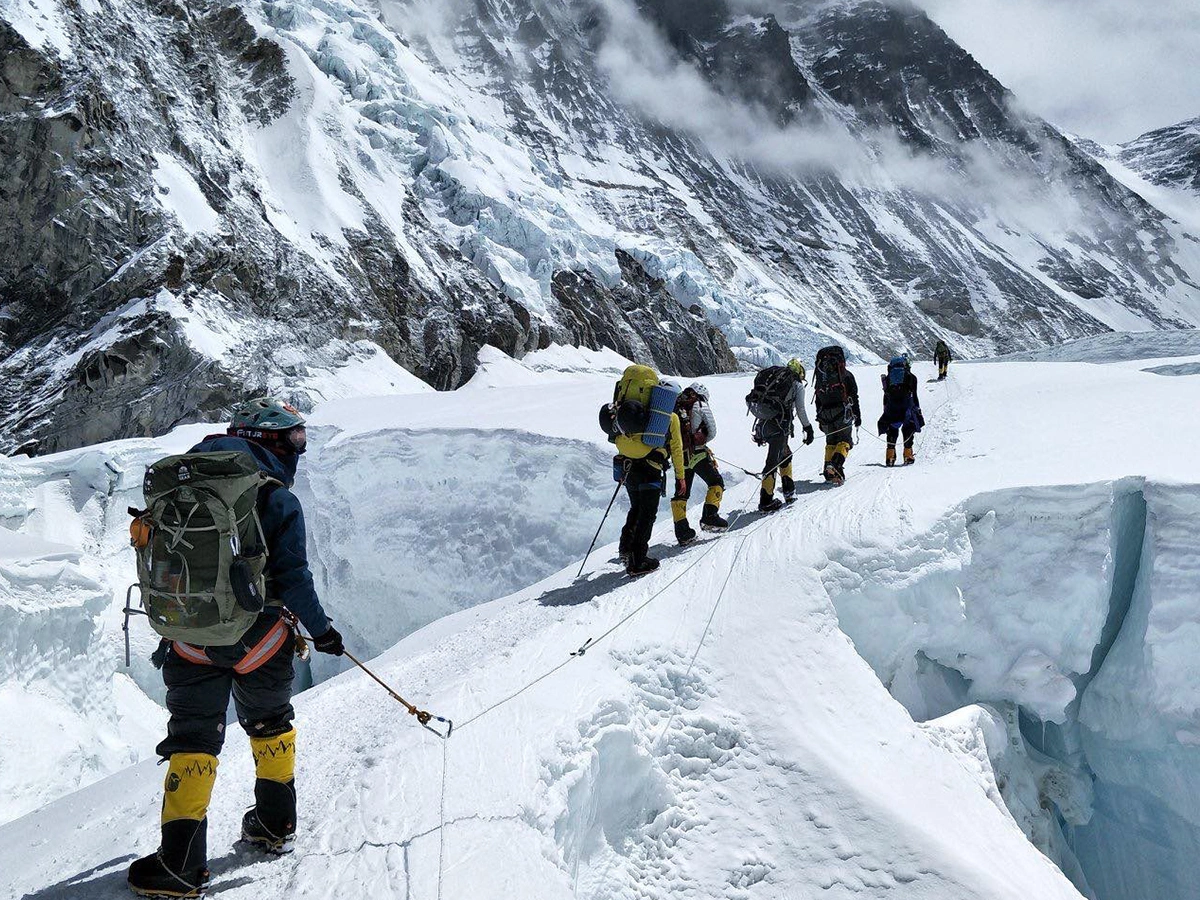Are you an avid mountaineer looking to conquer the ultimate dream of a Mount Everest Expedition in spring? Look no further. Our 62-day all-inclusive Mount Everest Expedition package allows you to conquer this pinnacle of adventure, giving you a profound sense of accomplishment. This experience, combined with a 360-degree view of the Himalayan landscape, is a rewarding journey that leaves an everlasting impression on all those who conquer Mount Everest.
However, climbers need to embrace the mental and physical challenges to make their way to the summit of Everest. Also, for a successful ascent, remember there are several crucial factors that come into play. You must undergo rigorous preparations, take expert guidance from experienced Sherpa guides, and also leave your luck to the weather and government policies.
Nonetheless, our comprehensive Everest Expedition in Spring package is built to ensure a safe and successful ascent to the top of the world. Our itinerary includes a strategic and gradual trek to Everest Base Camp, giving climbers adequate days for acclimatization in the harsh high-altitude environment. Additionally, upon reaching the Mount Everest Base Camp, our guides provide intensive assistance to help each climber prepare for the Everest summit push.
While the full duration of an Everest Expedition can vary, our journey focuses on essential rotations between the higher camps as you prepare to ascend to the world's highest point.
Turn Your Dreams into Reality: Join Our Expert-Led Mount Everest Spring Expedition with GMT Adventures
Our Mount Everest Expeditions are led by expert Sherpa guides who meticulously craft an all-inclusive 62-day spring expedition itinerary. We prioritize your safety and the success of your mission and give you a unique experience.
Partner with us for this once-in-a-lifetime adventure. Book now to join the Mount Everest Spring!
62-Day Mount Everest Expeditions: Cost, Guides, Permits, and Logistics
Climbing Mount Everest is a significant investment. It includes both financial resources and logistical planning. Depending on multiple factors, you can budget for the Mount Everest Expedition in spring. Compared to standard treks, the expedition costs are substantially higher, considering the level of operational challenges, highly specialized services, and the risks involved.
While booking your expeditions with GMT Adventures, we include all fundamental requirements, and determine the package cost of Mount Everest Expeditions (changeable upon customization request), including government fees and taxes, logistics and services during your expedition, support staff insurance and compensation, comprehensive food and accommodation, and air and ground transportation.
Major Highlights of Nepal Mount Everest Expedition
- Cultural exploration of Kathmandu
- scenic flight to Lukla, the gateway to the Khumbu region and the Everest trail
- Trek across charming Sherpa villages, including Phakding, Namche Bazaar, and Tengboche
- Cultural insights into the local traditions and hospitality
- Acclimatization days in Namche Bazaar with hikes to nearby viewpoints
- Trek to Everest Base Camp at 5,364 meters
- Acclimatization rotations through Camps I, II, and III to allow climbers to adapt to the extreme altitudes
- Technical ascent through the Khumbu Icefall, Western Cwm, and Lhotse Face
- Summit Mount Everest at 8,848.86 meters, the highest point on Earth
Navigating Toward the Everest Summit: Mount Everest Expeditions Camp System
There are four distinct strategic camps on the way to the Everest summit. Each camp is crucial as it helps you acclimatize, and at the same time allows you to adjust to the decreasing oxygen levels. As you progress to higher elevations above Everest Base Camps, these four camps allow your body to adapt to the high-elevation atmosphere, substantially reducing the risks of acute mountain sickness or altitude-related complications.
Camp 1: The Khumbu Icefall Gateway (6,065 meters / 19,900 ft): Your technical climbs truly begin from Camp 1. Located in the upper regions of the infamous Khumbu Icefall, you will undergo technical challenges as you cross the demanding ice crevasses. Camp 1 also tests your physical endurance and mental strength as you prepare for the greater adventure ahead.
Camp 2: Advanced Base Camp (6,400 meters / 21,000 feet): Camp 2, or the Advanced Base Camp, is located strategically at the base of the Lhotse Wall. You can find a relatively sheltered environment in this camp, which also functions as the primary operational hub. Our Sherpa support staff set up a comfortable camp here. Climbers generally make visits to Camp 2 and rotate back to EBC, practicing the “climb high, sleep low” strategy.
Camp 3: On the Lhotse Face (7,200 meters / 23,600 feet): Camp 3 is located on a steep icy expanse of the Lhotse Face. The air here is thinner, and supplementary oxygen may be necessary while sleeping. For better acclimatization, climbers usually spend two or three nights. This is a crucial stage where you will prepare your body for extreme altitudes higher up.
Camp 4: The South Col (7,900 Meters / 26,000 feet): Camp 4 is the ultimate staging point before you make your final Everest summit push. Situated at an altitude of approximately 7,900 meters, this camp lies close to the “death zone”, an altitude where human life cannot be sustained for prolonged periods. Camp 4 has extreme conditions, characterized by harsh winds and brutal temperatures. You will take a brief stop here, immediately before your summit attempt.


